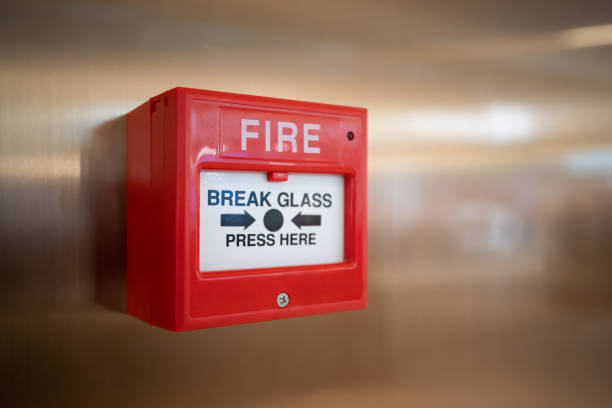
Guaranteeing Readiness: Comprehensive Fire Alarm Testing and Maintenance
Fire alarm servicing & maintenance is a critical line of defence, as the alarms reliability is not permanent. Over time, factors like the accumulation of dust and dirt within detectors, the natural degradation of standby battery life, or general electrical faults can cause the system to deteriorate. A compromised system can lead to serious consequences, from costly false alarms to, far worse, a complete failure to activate during a genuine emergency. Our Fire Alarm Servicing, Testing and Maintenance services are specifically designed to counteract this deterioration. Our specialists ensure your system not only remains fully functional but also complies with all Health and Safety Regulations and consistently meets the strict standards of the Regulatory Reform (Fire Safety) Order 2005 (RRO).
Expert Fire Alarm Servicing, Testing & Maintenance: Ensuring Your System is Battle-Ready
While no business ever wants to be a victim of a fire, being prepared is essential—and legally required. Under the RRO, the ‘Responsible Person’ is legally obligated to maintain all fire safety provisions in efficient working order. Our service provides the competence and assurance required to meet this duty.
Our team of fully trained and certified engineers provides expert, methodical Fire alarm servicing, testing & maintenance and testing for your entire fire alarm system. This comprehensive service covers every component that forms your life safety network:
- Main Control Panel: We check the panel’s power supplies, functionality of all zone indicators, event logs, and the integrity of all wiring terminals.
- Batteries: We conduct drain-down tests to measure the capacity of the standby batteries, ensuring they can power the system for the legally required duration (typically 24 hours plus 30 minutes of alarm operation) in the event of a mains power failure.
- Heat and Smoke Detectors: We use specialized test equipment, such as calibrated heat sources and aerosol smoke simulators, to verify that detectors activate correctly and respond within specified time limits. This ensures every sensor remains sensitive to the earliest signs of a fire.
- Manual Call Points (Break Glass Units): We physically test these units to confirm they are functional, easily accessible, and immediately send an alarm signal to the control panel.
- Sirens and Visual Alarms: We verify that sounders achieve the required decibel levels across all areas of the building, and that visual alarms (beacons) are operating for occupants who may be deaf or hard of hearing.
- System Interfaces: Crucially, we test all connections to ancillary equipment, ensuring that the alarm system correctly triggers fire door releases, shuts down ventilation systems, or alerts the remote monitoring station.
We execute this work with minimal disruption to your working day, scheduling tests strategically to fit around your operational requirements, often completing loud tests outside of core business hours.
Compliance and Documentation: Meeting British Standards
Meeting statutory compliance requires regularity. British Standards (specifically BS 5839-1) recommend that all non-domestic fire alarm systems undergo professional inspection and testing at least twice a year (a minimum of one full test every six months). Our tailored service schedule perfectly matches this recommendation, guaranteeing your system is always in full, verifiable working order.
During these visits, our engineers thoroughly inspect 100% of the system components over the course of the two visits, checking for faults, damage, signs of tampering, and compliance with current legislation.
Following our inspection and successful testing, our specialists will provide you with all the standard documentation required by law. This documentation includes:
- A Service and Maintenance Certificate: Formal proof that the work was completed by a competent person.
- Detailed Inspection Reports: A breakdown of all tests performed, including any defects found and the remedial actions taken.
- The Site Logbook Update: A complete record of the testing and any non-conformities are entered directly into your official fire alarm logbook.
This comprehensive paper trail proves to regulators, insurers, and employees that your business is compliant and safe, demonstrating that the Responsible Person has fulfilled their legal duty to ensure life safety provisions are effectively maintained.
Would you like to know more about the different service contract levels we offer, such as our emergency call-out response times?
